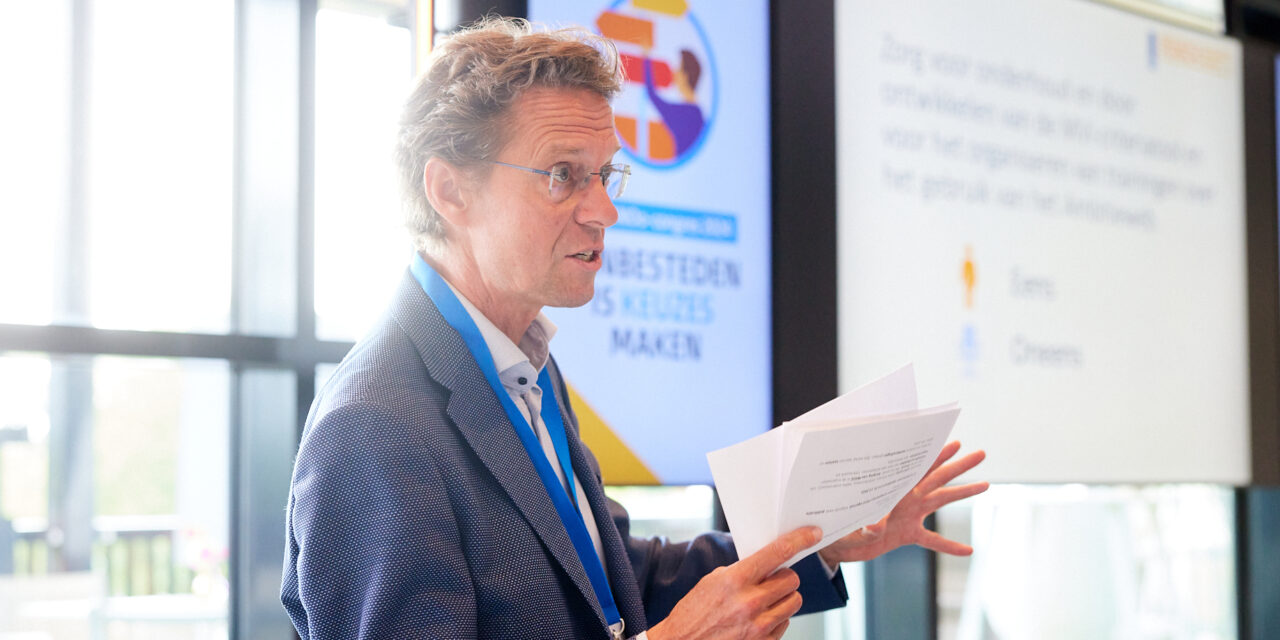Lessons from the Community of Practice: How circular contract management is shaping the future of procurement

Contract management is essential to achieving sustainable and circular goals. The Community of Practice (CoP) on contract management in circular procurement processes produced valuable insights that help organisations to better embed circularity in their contracts. In this article, Hans Bloemendaal, Advisor Socially Responsible Procurement at PIANOo, shares the three most important lessons, tips and practical examples from the CoP.
Can you first tell us a bit about the Community of Practice?
‘The focus of the CoP contract management in circular procurement processes was on contract managers and buyers within organisations where contract management is already in place. Contract management takes place mainly in the phase after the contract has been awarded and signed. But contract management can also play an important role in the preceding phases. More than 100 participants from public and private sectors exchanged knowledge and discussed issues in order to take steps together in circular contract management. After all, it often remains unclear to what extent sustainable ambitions are actually being realised. This is precisely what the CoP focused on. The CoP contract management in circular procurement processes provided insight into the possibilities to properly secure and develop circularity. The collaboration between CSR Netherlands, PIANOo, Nevi and Rijkswaterstaat, under the banner of the Acceleration Network for Circular Procurement (Versnellingsnetwerk Circulair Inkopen (VCI)), gave us the opportunity to further drive circularity. After all, the VCI has already a good network of professionals in the field of Procurement and Contract Management. This makes it an excellent platform for a CoP. The CoP was set up in early 2022 and was completed in 2023. A total of nine meetings have been organised.’
What is the challenge for contract management?
‘We saw that incorporating circularity into procurement processes is still a challenge for many parties. Although the agreements are often already made and contractually defined, effective contract management goes beyond simply complying with these terms. It requires active engagement and continuous evaluation. This emphasises the need to take contract management seriously and delve further into achieving sustainable and circular objectives. Reason enough to get started with this!’
What are the key lessons you learned?
Lesson 1: Create room for innovation and development
‘Do not try to limit contracts completely with predefined Key Performance Indicators (KPIs) and requirements. Circularity, and therefore circular procurement, is constantly evolving. What is the highest standard today may be obsolete a year later due to new technologies and innovations. It is crucial to take this into account when drafting contracts. Instead, leave room for adjustments and development during the term of the contract. This means including flexible terms that allow suppliers to improve their approach and respond to new insights and techniques. It is therefore important to be mindful of advancing knowledge and opportunities, and to draft contracts in a way that allows room for further innovation and improvement. A great example of this is the project on the riverbank in North Holland, where providing development opportunities proved crucial for making circular steps.’ Read more about this project here (article is only available in Dutch).
Lesson 2: Find a collaborative approach and move away from traditional roles
‘Effective contract management requires a shift away from the traditional division of roles between client and supplier. Instead of a client-supplier relationship, where the roles are strictly separated and each party mainly represents its own interests, it is more effective to seek a collaborative approach. Instead of the more traditional and business like approach -in which roles are separated, the result is central and the relationship is mainly focused on price/quality-, it is desirable to optimise collaboration. The focus here is on a ‘win-win’ situation and value optimisation. By forming a partnership and promoting open Communication, both parties can work jointly on innovation and further development. This approach enables a faster response to new insights and challenges around circularity. A cooperative attitude leads to successful and continuous improvement. We must say goodbye to rigid contractual frameworks.’
Lesson 3: Collaborate towards a common standard for circularity
‘When developing circular contracts, it is important to look within your own sector and industry for what this would mean and opportunities. The use of uniform KPIs and guidelines enables a better comparison of contracts. Uniformity provides a solid basis for measuring performance and ensuring consistency. On a broader level, such as within sectors or buyer groups (BGs), a uniform way of invitation to tender helps to get the market moving and accelerate the development of circular solutions. A (procurement) collaboration can also play a role here. The Amsterdam Metropolitan Region, for instance, offers a programme that supports governments to include circular principles in procurement. When demand from different clients is consistent, suppliers can better prepare and invest in the necessary innovations. This prevents every new tender from leading to substantial investments in time and money to adapt offers and solutions. A good example of this is the development of a guideline for circular office and learning environments, where major clients such as the Rotterdam office, Utrecht University, the Dutch government and PWC sat around the table with furniture manufacturers and other players in the chain. Thanks to clear definitions and guidelines of circular office furniture, clients now have the tools for inviting to tender, as well as assessing and measuring circular solutions. Read more here.
The Community of Practice was completed by the end of 2023, what’s next?
‘With the CoP, we learned valuable lessons on how to improve circular contract management. In the future, we need to keep learning and adapting, applying and refining the lessons learned from the CoP. This requires a proactive attitude from contract managers and buyers, as well as continuous dialogue within the sector. Only by acting together and sharing knowledge can we effectively embrace future developments in the circular economy. The VCI will certainly play a role in this in 2025 as well. So keep an eye on this website!
Finally, we have learned that in many cases circular procurement pays off, either in the long run or because it contributes to (local) employment, for example. So arguments like ‘it’s too expensive’, should be behind us by now. It is worth the investment, often also from an economic perspective.’
Additional tips
- Encourage bidders to consider the KPIs on which they will be evaluated.
- Shape contract management and KPIs in line with the winning bid.
- Have the contractor monitor or involve an external expert in the monitoring process.
- Provide the opportunity to develop (together) during the contract period.
- Also consider two-way KPIs and have the supplier assess you too. This benefits collaboration and the result.


